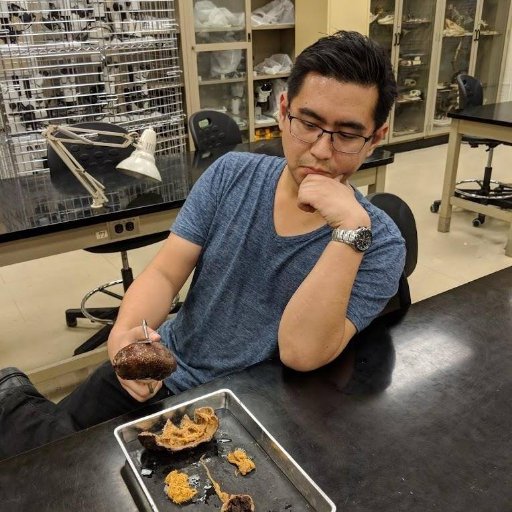A #FossilFriday retweet of our paper on deuterostome origins that came out this week. How can you link these monsters together in a single evolutionary framework? Short answer: with a lot of head scratching and whisky. Long answer: check out the paper. https://t.co/dRbaP9ZlO9
Great @nytimes coverage of @SarahLosso1 and @InvertebratePal's new @MCZpaleo paper on the licentious habits of trilobites. Choice passages: "shroud of mystery," "flexible fingerlike," "shriveled limbs," "spiny backside." Will the scandal never end?
https://t.co/mxVHLvi7W1
One of the greatest things about reading manuscripts on weirdos like tunicates is that the drawings often look like some eldritch horror out of Berserk. From Sanamyan and Sanamyan 2005:
Forgot to add, the program goes live at 11am. If you want a teaser about some of the cool fossils we'll be talking about, check out this blog post I wrote a few years ago (art by @MesozoicMuse ):
https://t.co/73chPbWNyQ
The Burgess Shale is known for the exceptional preservation of half-a-billion year old invertebrates which give unique insights into early animal evolution. What can be harder to study are the whole communities in which those animals lived; these studies are time/effort intensive
More evolutionary insights from the #BurgessShale, a new species of Mollisonia described by Aria and @ROMtoronto curator J-B. Caron. I remember seeing some of these specimens before they'd been prepared, absolutely unreal levels of appendage details revealed! #DeepTime
Awesome new paper by Joe Moysiuk and JB Caron describing the "spaceship" radiodontan from the #BurgessShale. I particularly like the discussion of feeding ecology, supported by beautiful plates of the appendages/mouth: https://t.co/g7hQl8rqFX
#DeepTime @ROMtoronto @UofT_Palaeo
#DeepTime Cambrian ecosystems could be quite complex, with many of the hallmarks of a modern benthic community. The @NMNH dioramas do a great job of showing this, with priapulids like Ottoia and Selkirkia being a major infaunal component. Second image from https://t.co/6UGECm1ICU
#DeepTime Today's Cambrian creatures (find them in @NMNH's new fossil hall opening this Saturday) are Ottoia (first) and Selkirkia (second). These predatory worms had vicious mouthparts covered in teeth, hooks and spines (third). Images https://t.co/ff6Sc6cqCk by @PalaeoSmith
@amiasmatics @NMNH @ROMtoronto The first image is a close up on some of the branchiae, which have a sort of grape-cluster like appearance (Eibye-Jacobsen 2004). The second image is a cross-section line drawing showing where they'd be located (Conway Morris 1979). (2/2)




















